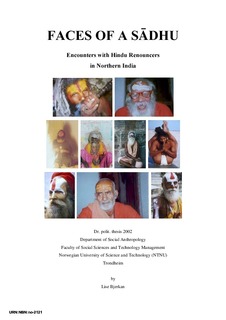| dc.description.abstract | What is it about India and Varanasi, this holy city on the bank of the Ganga that has made me return, again and again? It is definitely not the freezing cold temperatures during mid-winter, nor is it the dry heat at spring, or the wet and humid months of the monsoon. It also has nothing to do with the bottomless poverty – the beggars halfeaten by leprosy pushing what once was an arm through the open window of my cab. It is not the constant power failures, the dirt, the touts, the diarrhoea, or the souvenirs. What is it then? For ten years I’ve been asking myself this question without yet having come to know the answer. ‘Mother India’, I have realised, raises more questions than she provides answers, and it could simply be that it is this infinite roundabout of questions begging for answers that makes some of us return – over and over again.
India is a continent of paradoxes and contradictions – desperate poverty and immense wealth, purity and impurity, caste and class, heat and cold, monsoon and drought, mosques and temples, ahimsa and violence, secularism and fanaticism, sacred cows and holy men. Enigmatic customs and practices, raise an apparently never-ending line of questions with either no answers or a multitude of them.
In the pages to follow, I will try to shed light on one of the cultural and religious traditions that I find fascinating in this country of contrasts. What I have in mind is the practice of renunciation, a life-style adopted by men and women of all ages. These holy figures, dressed in saffron (some also in white, red or black), have left the material world behind in order to devote their thoughts and actions – their beings – to matters of a higher spiritual nature and, in this way, to prepare themselves to leave their bodies. They have left behind the world of domestic demands, obligations and dependency and entered what is often described as a state of peace (santi) and eternalhappiness. | nb_NO |
